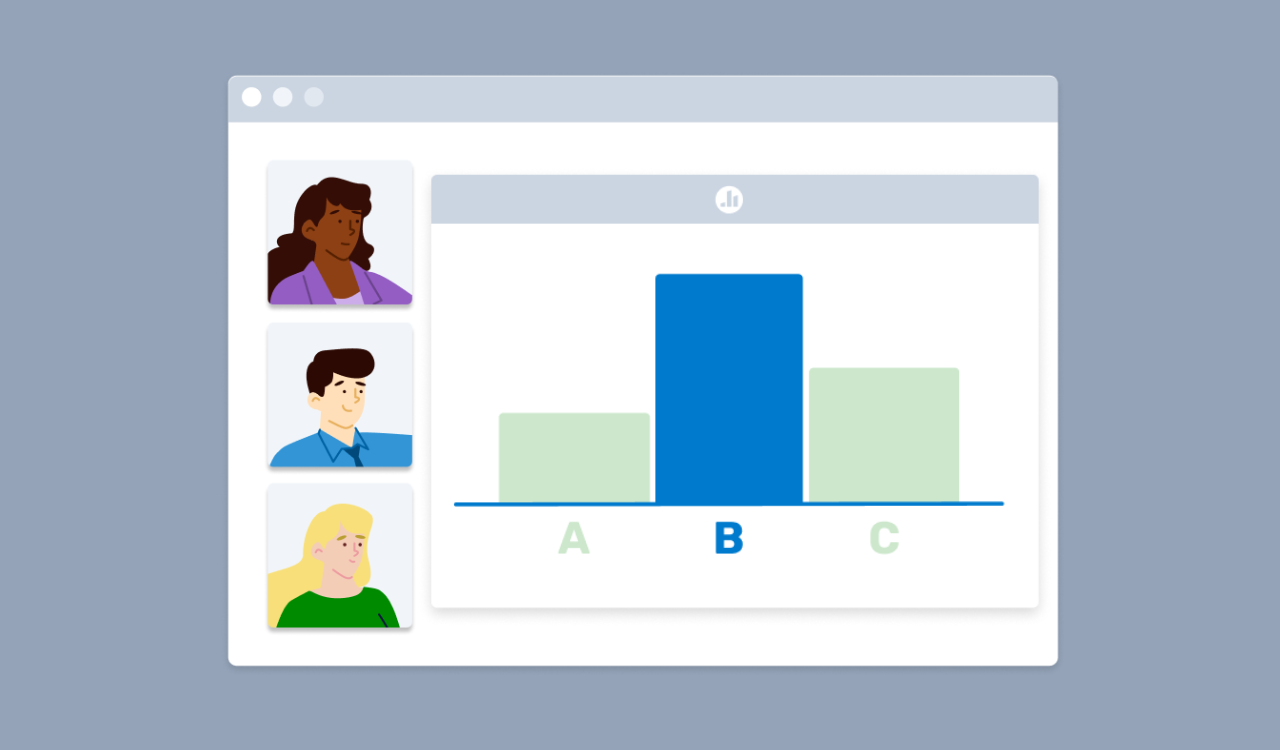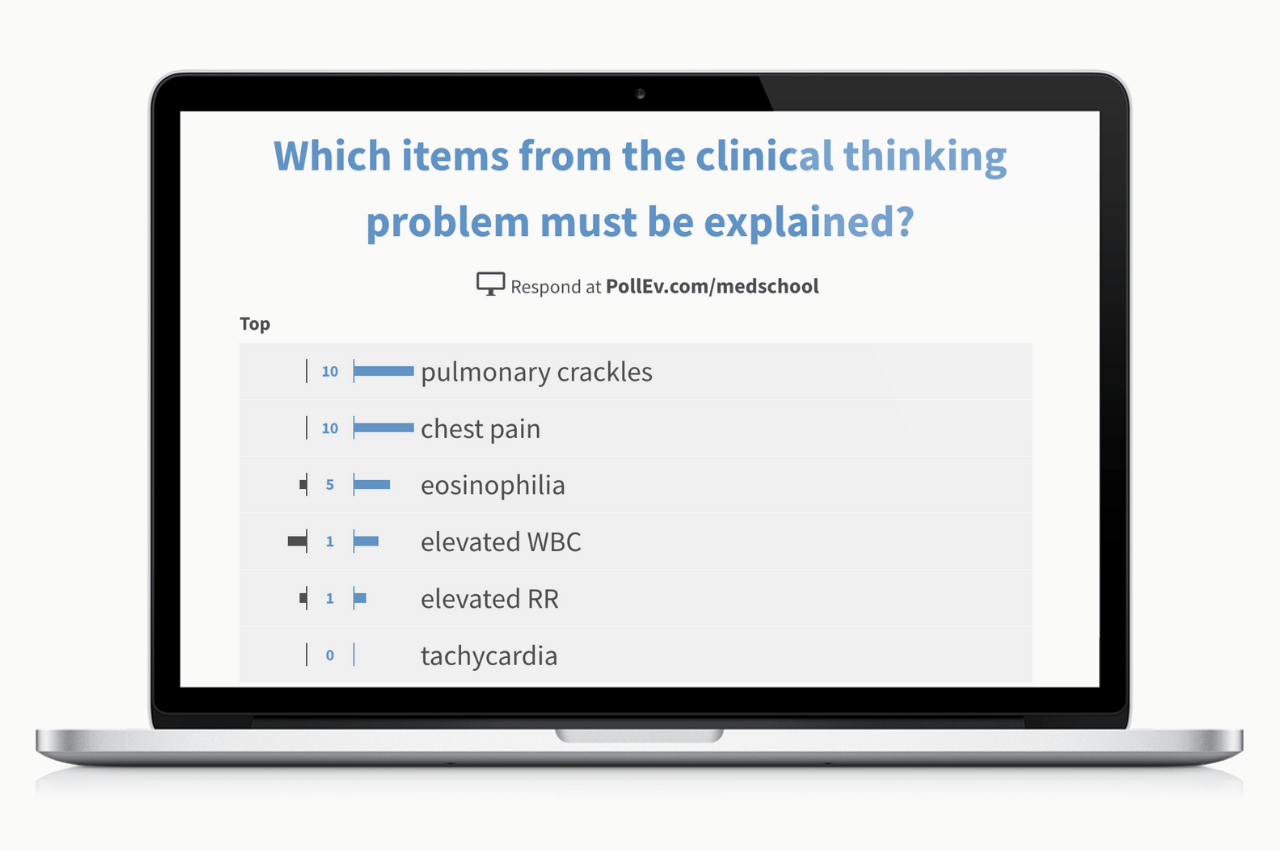Active Learning Strategies: 11 Ways to Immerse Students in Your Lesson

Imagine this scenario: You're pouring your heart into a riveting lecture about quantum physics, postmodern literature, or the socio-economic impact of the potato famine. But when you look up from your notes, you see students zoning out, scrolling through their phones, or dozing off.
Sound familiar? If so, it's time to talk about active learning.
Active learning requires students to get actively involved in the learning process. A 2021 study of the impact active learning strategies had on students in an online course found these methods improved both hard and soft skills as well as motivation.
If you’re ready to motivate students to ask questions, engage in discussions, and collaborate on projects, let’s explore 11 active learning strategies and five edtech tools designed for higher ed classrooms.
What is active learning?
Active learning replaces one-way lectures with more interactive educational activities and instructional strategies. As a student-centered teaching method, it promotes the development of problem-solving and critical-thinking skills.
With active learning, instructors act as facilitators for learning outcomes by providing timely feedback. This approach gives students the autonomy to direct their learning journey and fosters a more inclusive learning environment.
“Active learning is both more effective and more equitable, in all fields and all levels, than traditional lecture or question-and-answer discussion methods,” says Cathy N. Davidson, co-author of The New College Classroom, in an article for the CUNY Graduate Center.
Additionally, other benefits of active learning include the following:
- Better knowledge retainment
- Student autonomy and empowerment
- Works for hybrid, virtual, and in-person classrooms
- Co-learning opportunities
11 effective active learning strategies
These examples of active learning strategies are tried-and-true ways to foster student engagement and develop higher-order thinking skills.
1. Cascading persuasion

University of Arizona law professor Christopher Robertson uses cascading persuasion to help students understand the intricacies of US law. To start, Robertson presents a case and allows students to discuss it during class. Then, Robertson uses Poll Everywhere to pose a multiple-choice question that gauges students’ comprehension of how the law applies to the case.
If too many students answer incorrectly, Robertson doesn’t reveal the correct answer. Instead, he divides students into small groups to debate which choice is correct. When the groups reach a consensus, they find another group and plead their case.
Eventually, the entire class agrees on the correct answer. Most of the time the consensus is correct, but on the rare occasion it’s not, Robertson says it’s an easy fix with class discussion.
2. Think-pair-share
Think-pair-share presents students with a problem or topic and then requires them to think about a solution or their stance on the matter.
Once they’ve had time to think, the instructor pairs students up to discuss their take with a peer. Each student is encouraged to ask clarifying questions, and then work together to agree on their conclusion. Once every pair has agreed, they take turns presenting to the rest of the class.
3. Live feedback

Live polls combined with anonymous responses can help instructors gather feedback without students clamming up.
Gabriel Grant and Jason Jay, founders of the interactive workshop Breaking Through Gridlock, use Poll Everywhere to encourage participants to discuss the undiscussable.
While the entire class can see all the responses, no one can see who shared what. Grant and Jay then offer feedback and advice to the group based on what they’re seeing.
Instructors can use this active learning technique to invite students to share what course material they’re struggling with—AKA the muddiest point—and then adjust the day’s lesson plan to cover the most commonly mentioned topics.
4. Sage and scribe
In this active learning activity, students split into pairs. One student assumes the role of the educator (sage) and the other becomes the note-taker (scribe).
The instructor then assigns a topic and asks the sages to explain it in detail to their scribes. As the sages explain, the scribes take detailed notes. When time is up, students switch roles.
This learning strategy is great because teaching others is proven to not only increase student understanding but also help them retain newly acquired knowledge. It’s not just the sages who reap the benefits. The scribes do, too, because taking notes also helps students learn.
5. Interactive images

Using visuals like images and videos in class is an effective engagement strategy, and you can add an interactive element with Poll Everywhere’s Clickable images.
Dr. Vikas Shah, a consultant radiologist at the University Hospitals of Leicester, uses clickable images as a go-to active learning method. Dr. Shah shares information with the class, then students need to click on an interactive radiology image where they believe an abnormality lies.
The correct answer is then revealed—along with several green pins indicating where everyone tapped—and students can chat about the results in a group discussion. Clickable images can also be used to provide essential context or as interactive elements in other active learning strategies like role-play.
6. Gallery walk
A gallery walk is a visual approach to creating an active learning classroom where students visit each “art installation” and write down the first word or thought that comes to mind. They then discuss what they’ve written down with the rest of the class.
While a gallery walk is traditionally used for in-person classrooms, instructors can implement it as a remote learning strategy for engaging students online. Use a presentation tool like PowerPoint or Google Slides to show one gallery installation at a time. Have students write down their thoughts for each slide, then open up the discussion once the walkthrough is completed.
Bonus tip: Use Poll Everywhere with your presentation tool to gather students’ thoughts in a word cloud and share the results with your class in real time.
7. Sketch notes
Sketch notes take doodling to the next level by asking students to draw, doodle, and sketch the key points from your lecture, a class discussion, or assigned reading. They can use handwritten words, arrows, boxes, and even faces to outline those main concepts.
These doodles help students visualize abstract concepts and understand the relationships between different topics. Additionally, sketching out notes inspires creativity and critical thinking—students must decide which parts of the concept are most important and therefore worthy of a doodle.
This method of student learning also encourages them to engage with content in the way that works best for them.
8. Translate that
Jargon, acronyms, and pedantic language can overwhelm students and block their comprehension. The “translate that” strategy helps students break down dense content in their own words—as if they were explaining it to a five-year-old. This also helps instructors check if their students understand the course materials.
You can also ask students to summarize what they learned this week and feature their responses with Poll Everywhere’s Word cloud tool. Ask students to answer questions like, “What was the most important thing you learned this week?” or dig into specific topics with questions like, “What is a mitigation strategy a business can use to defend against cybercriminals?”
Learn more: 10 education word cloud activities that get students talking
9. Fill in the blanks
With this active learning strategy, instructors can create interactive lectures using fill-in-the-blank worksheets, or guided notes. Students must pay close attention during class or when completing homework to fill in missing key points.
This encourages students to become active participants in your lecture and provides them with a complete set of notes that can help them study for upcoming exams. Just remember, the goal here is to prime students to listen for new knowledge and important concepts and jot them down. So strategically design your guided note worksheets for maximum participation.
10. Crowdsourcing

Crowdsourcing may not be the first strategy you think of when instructing students, but this collaborative approach has its benefits. Here’s how University of Arizona professor Dr. Paul Gordon uses crowdsourcing as an activity learning method to engage his medical students.
Gordon starts class by asking students to read through a medical history transcript together. He then presents a Poll Everywhere Q&A activity that asks which items from the patient's history should be added to a list of the patient’s most critical health problems.
Students respond with their choices and then upvote responses from their peers. Together, the class crowdsources a list of the best submissions, and Gordon uses the results and following discussion to foster an experiential learning environment.
11. Use post-class surveys

Surveys require students to think critically about the survey topic, and open-ended questions can encourage students to use their communication skills to explain their answers.
Many educators use surveys for post-class assessments and assign them as homework. Students respond to the survey questions independently before the next class. Then the instructor can prepare the next class by reviewing completed surveys to inform what course content should be discussed further.
Alternatively, instructors use surveys to collect feedback on the class and their teaching methods. This feedback can help educators spot areas for improvement or know which active learning strategies resonated most with students.
Bonus tip: Use Poll Everywhere for post-class surveys—or administer pre-lecture assessments to gauge how well students understand the topics in your lesson plan.
5 active learning tools for higher education
Along with these 11 active learning strategies, instructors can use technology and other classroom tools to encourage participation and add an interactive element.
1. Poll Everywhere

Poll Everywhere is a game-changer for real-time participation. It allows you to create interactive quizzes, Q&As, word clouds, and even friendly competitions that all provide real-time feedback on student responses.
Its anonymous response tool helps instructors hear from all students, even in large classes, by providing an outlet for them to ask or respond to questions. Poll Everywhere’s multiple-choice quizzes also help instructors assess students’ prior knowledge, gamify their teaching strategies, and encourage students to stay actively engaged until the end of class.
2. Canva
Canva helps instructors create engaging presentations, worksheets, and infographics with interactive elements that grab students’ attention. The app is user-friendly and includes an extensive library of templates.
It also has a whiteboard feature where students and instructors can draw, create workflows, and visualize learning with multiple diagrams and graphics.
3. Online whiteboards
Speaking of digital whiteboards, these tools deserve a spot in your active learning toolkit. With a whiteboard, students can sketch, doodle, quickly share their notes, and brainstorm ideas with classmates.
Additionally, whiteboards can facilitate gamified classroom activities, like Pictionary and Hangman, or create storyboards, comics, and classroom murals. Check out Miro, Limnu, and Ayoa Ultimate to get started.
4. Penseum
Artificial intelligence (AI) is rocking the world, and higher education isn’t left out. Tools like Penseum use AI to help students study by adapting uploaded lecture notes into flashcards and multiple-choice quizzes.
Penseum also includes an AI chat tutor that students can interact with to learn more about specific concepts, get help with questions, or test their understanding. Instructors can also upload their lecture notes and create a study roadmap to share with students for asynchronous, self-paced learning.
5. Padlet
Now even online and hybrid classrooms can feature a beautiful bulletin board with Padlet. Use this visual tool to encourage students to share what they learned, create a course schedule, and allow for collaboration on group projects.
Instructors can also invite students to use Padlet as a message board, sharing questions and helping peers work through challenges. Students may also find Padlet an ideal outlet for connecting with instructors to get help or ask questions about midterms.
Promote active learning with the right strategies and tools
Active listening isn't just a nice-to-have—it's a must-have in the world of higher education. It transforms passive students into engaged learners who benefit from improved critical thinking and problem-solving skills as well as better comprehension and retention.
Strategies like the ones we shared and tools like Poll Everywhere can help you implement active learning in your classroom, whether it’s in-person, hybrid, or online. Discover more ways Poll Everywhere transforms higher ed classrooms and book a free demo today.
